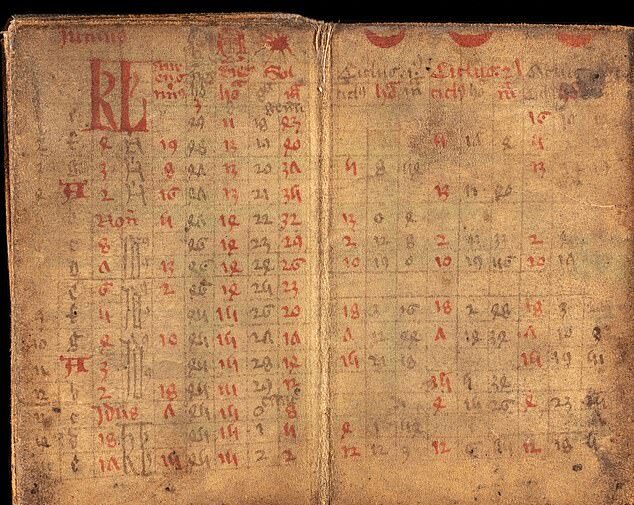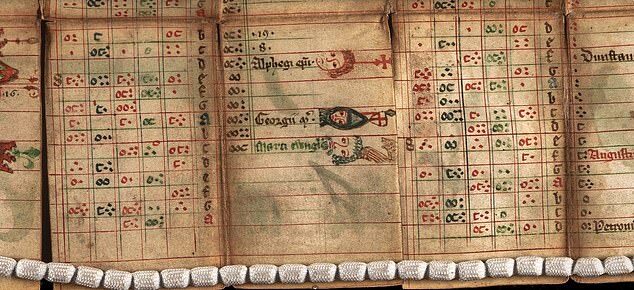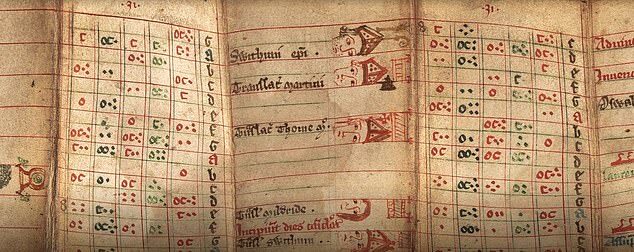
It also details a strange-looking code, with Os, Cs and dots.
But three centuries later, a team of archivists have finally understood this 14th-century manuscript's history.
The manuscript, designated MS/45, was donated by Robert Moray FRS to the Royal Society in 1668. He dubbed the artefact a 'curious Almanack'.
It is one of the oldest items in the Royal Society collection.
The foldable almanack is designed to be portable and has three sections: signs of the zodiac with monthly activities, a calendar of Christian festivals, and an astronomical calendar for calculating day of the week and hours of daylight.
The archivists have concluded that the code relates to numbers in a lunar calendar.
Decoder and historian Seb Falk from the University of Cambridge said the manuscript gives a unique insight into mediaeval thinking and daily life.

'There's quite a lot of codes in mediaeval manuscripts and when people find them, they often expect them to be hiding important information like the secret of alchemy. It never is, it's always fairly banal stuff,' he said, according to The Times.
THE SOLUTIONHe added: 'Part of it is just a game. It's bored monks wiling away the time in the cloisters by giving themselves intellectual challenges.'
At the centre of the code is the lunar calendar.
You can use this to work out the dates over the 76 years of a new moon in a specific month and year.
From there, you can see that the code is in Roman numerals. The O is X, the C is V and the dot is I.
Such mystery and intrigue was common in this period for manuscripts such as this one and Mr Falk said: 'the casual observer might be wowed by it.'
According to the British Library, lunar calendars tended to be heavily decorated with gold and coloured text as well as depictions of the zodiac signs and the so-called 'labours' or 'occupations of the months'.
The agricultural labours on show in this manuscript indicate that the almanac was made in the South of England.
These activities were categorised by month and tended to depend on the seasonal weather, such as harvesting or sowing seeds.
- January: feasting
- February: someone warming their feet by a fire
- March: tree pruning
- April: spring activity in the countryside and picking flowers
- May: hawking (the training birds of prey to hunt small wild game and birds)
- June: reaping or harvesting of hay
- July: weeding or harvesting of wheat
- August: threshing
- September: grape harvesting or the making of wine
- October: sowing
- November: gathering acorns for hogs or pigs
- December: slaughter of the pig
- January: the water bearer of Aquarius
- February: the fish of Pisces
- March: the ram of Aries
- April: the bull of Taurus
- May: the twins of Gemini
- June: the crab of Cancer
- July: the lion of Leo
- August: the woman of Virgo
- September: the scales of Libra
- October: the scorpion of Scorpio
- November: the archer of Sagittarius
- December: the goat of Capricorn




Phhfftttt
Everybody knows the moon is made of cheese